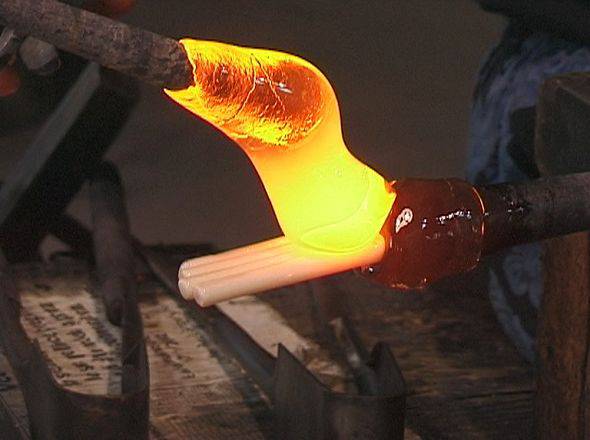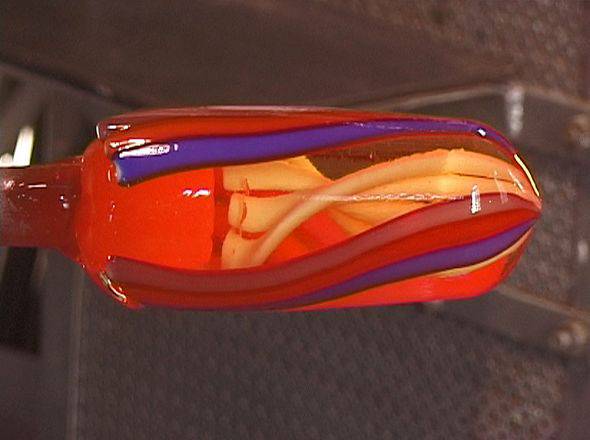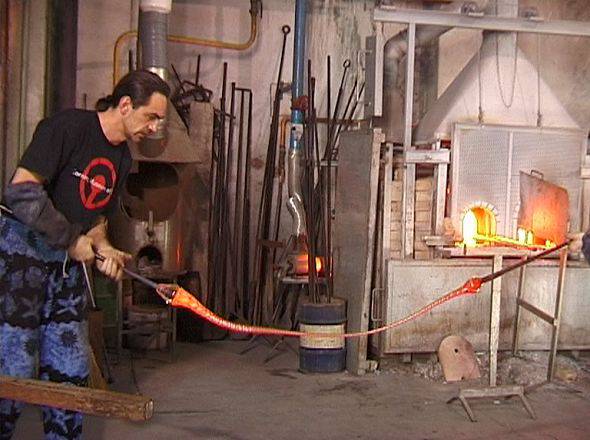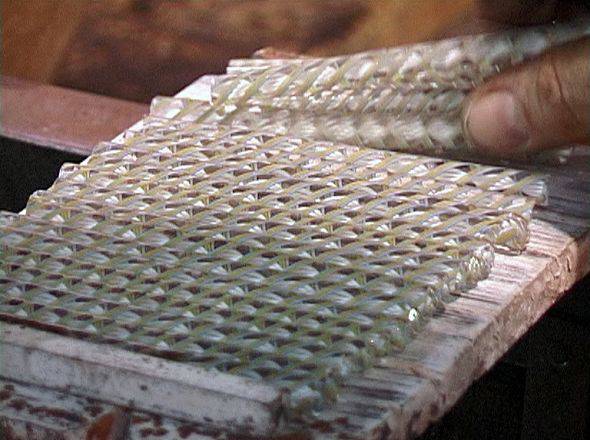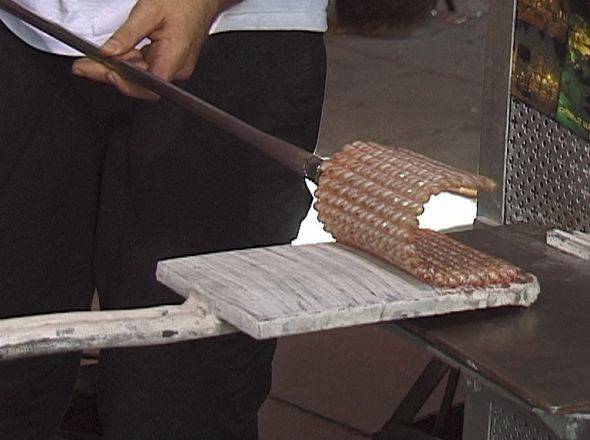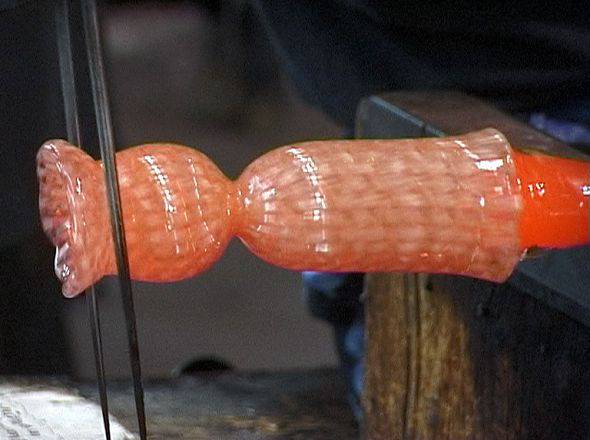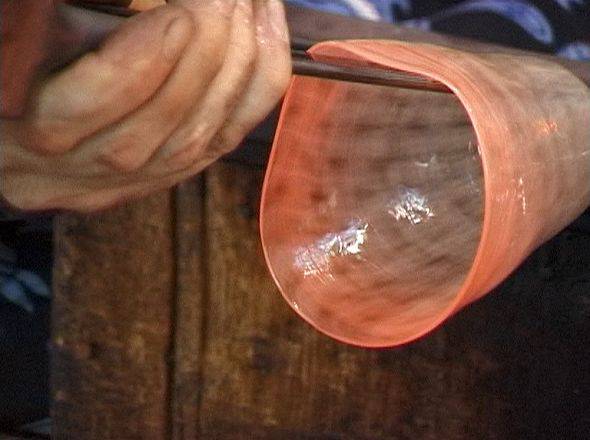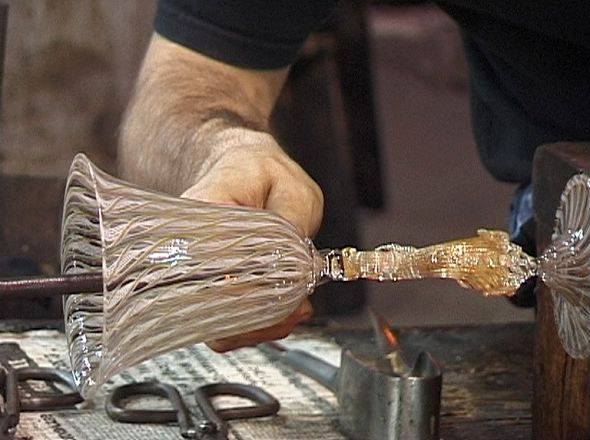Description
Video above: Twisted (a Retortoli) Filigree
This is one of the most important techniques invented in Murano during the Renaissance. It was patented in 1527 for 10 years by Filippo and Bernardo Catani with Murano furnaces dedicated to Venice and was soon common practice amongst the Murano glassworks and was also exported abroad in the 'façon de Venise' glassworks.
The work is carried out in phases. Various non-holed canes made of crystal or opaque-white glass, in the classic version, or crystal and coloured glass and then assembled in a cylinder in a regular arrangement. They are then reheated and stretched again, and twisted in this last operation.
Crystal canes with white or coloured inside threads are spiral-twisted, then cut into identically-sized segments (about 20 cm) and arranged parallel to each other on a metal surface and covered in refractory clay, then repeatedly placed in the oven so as to fire-join the canes in one single one.
The craftsman picks up the glass slab formed by the parallel canes with a blow pipe by rolling a conical object which had been laid at the edge of the pipe itself, along the longest side of the rectangle, which is the edge of the pipe. So the end product is a cylinder, which is closed at the opposite edges to the blow pipe. He can then blow and shape the object.
In Northern Europe, especially after the publication of Guide du Terrier by Georges Bontemps (1868), the twisted filigree is worked using other methods. The twisted filigree pipes are placed in the vertical grooves of a mould, generally graphite, then transparent glass is blown inside the mould which adheres to the heat of the twisted pipes, which are separated from each of them, unlike the Venetian twisted filigree.
In the first phase of working (which is finished before the blowing phase) the Venetian twisted filigree is similar to Alexandrian and Roman lace mosaic glass. The slab though had to be sagged over a mould, as for normal mosaic glass, and cold-refinished with grinding on the inside and at times on the outside.
A modern version of the twisted filigree is the 'Merletto' (lace) used by Archimede Seguso in Murano in the 1950s.

